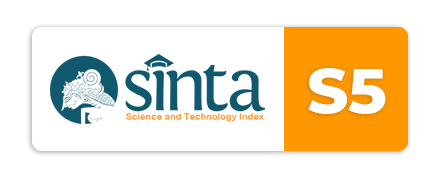ANALISA FOIL NACA SIMETRIS DAN ASIMETRIS PADA SISTEM MEKANISME FLAPPING WING UNTUK SISTEM PENGGERAK KAPAL KATAMARAN
DOI:
https://doi.org/10.33556/jstm.v0i0.4Abstract
Salah satu arah perkembangan yang menarik bagi para peneliti teknologi perkapalan adalah mencari teknologi perkapalan yang memanfaatkan teknologi foil untuk efisiensi yang lebih baik untuk sistem propulasi kapal. Pengembangan teknologi ini mengadaptasi dari sistem gerak bionik yang telah banyak dilakukan sejak abad ke 19, Salah satunya adalah pemanfaatan sistem flapping wing bionik untuk pengembangan teknologi propulsi. Melihat konsep gerakan dari bionic laut dirancang system propulsor flapping wing yang menyerupai ekor bionic laut dengan menggunakan mekanisme four bar link crank-rocker sebagai penggerak kapal cruising catamaran dengan ukuran LoA = 15,87 m, LWL = 14,95 m, Bmax = 5,57 m, H= 2,06 m, T = 0,8 m, BH= 1,18 m. Menggunakan foil NACA 0015 dan 4415 dengan panjang chordline 1 m, dan span 0,56 m.
Penelitian ini membandingkan thrust pada foil simetris dan asimetris dengan thrusts crew propeller dan menghasilkan thrust pada foil NACA 0015 dan foil NACA sebesar 11435,28 N dan 11099,22 N, dibandingkan dengan thrust propeller sebesar 10945,87 dengan menggunakan power engine sebesar 52 Hp.
Kata kunci : Flapping wing, crank-rocker, foil, simetris, asimetris, thrust
Published
Issue
Section
License
Authors who publish with this journal agree to the following terms:Authors retain copyright and grant the journal right of first publication with the work simultaneously licensed under a Creative Commons Attribution License that allows others to share the work with an acknowledgement of the work's authorship and initial publication in this journal.
Authors are able to enter into separate, additional contractual arrangements for the non-exclusive distribution of the journal's published version of the work (e.g., post it to an institutional repository or publish it in a book), with an acknowledgement of its initial publication in this journal.
Authors are permitted and encouraged to post their work online (e.g., in institutional repositories or on their website) prior to and during the submission process, as it can lead to productive exchanges, as well as earlier and greater citation of published work (See The Effect of Open Access).




